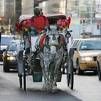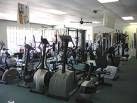![]()
![]()
![]()
Use LEFT and RIGHT arrow keys to navigate between flashcards;
Use UP and DOWN arrow keys to flip the card;
H to show hint;
A reads text to speech;
128 Cards in this Set
- Front
- Back
- 3rd side (hint)
|
abbreviate
|
shorten, abridge - to reduce (anything) in length, duration, etc.; make briefer: to abbreviate a speech.
|
brevi(s) short
|
|
|
abstinence
|
act of refraining from -Abstinence implies the willful avoidance of pleasures, especially of food and drink, thought to be harmful or self-indulgent
|
present participle of abstinre, to hold back. See abstain.
|
|
|
abstract
|

not applied to actual objects - theoretical; not applied or practical - to make an abstract of; summarize
|
trahere, to draw
|
|
|
acquired
|
developed or learned; not naturally occuring - To get by one's own efforts
|
from Latin acqurere, to add to : ad-, ad- + quaerere, to seek, get
|
|
|
adulation
|

high praise - to show excessive admiration or devotion to; flatter
|
ad- toward and indicated direction, tendency, or addition
|
|
|
aesthetic
|

having to do with the appreciation of beauty
|
|
|
|
affable
|

easy-going; friendly
|
af- var. of ad- before f - fr, to speak
|
|
|
alienated
|

removed or disassociated from (friends, family, or homeland)
|
ali-, base of alius other
|
|
|
alienate
|
To cause to become unfriendly or hostile
|
|
|
|
alleviate
|

to ease a pain or a burden
|
var. of ad- before l - levi(s) light, not heavy
|
|
|
alliance
|
a union of two or more groups
|
al- al- + ligāre to bind - see alloy and ligament
|
|
|
ambiguous
|

having several possible meanings or interpretations - lacking clearness or definiteness
|
ambi- both
|
|
|
ambivalent
|

simultaneously having opposing feelings; uncertainty, esp. when caused by inability to make a choice or by a simultaneous desire to say or do two opposite or conflicting things
|
valēns), prp. to be strong
|
|
|
amenable
|

ready or willing to answer, act, agree, or yield; open to influence, persuasion, or advice; agreeable
|
"able - a suffix meaning capable of, susceptible of, fit for, tending to, given to, associated in meaning with the word able, occurring in loanwords from Latin (laudable); used in English as a highly productive suffix to form adjectives by addition to stems of any origin (teachable; photographable)Also, -ble, -ible.
|
|
|
amicable
|

characterized by or showing goodwill; friendly; peaceable
|
amīc(us) friend, friendly
|
|
|
ample
|
describing a large amount of something - of adequate or more than adequate extent, size, or amount; large; spacious; roomy
|
amplus wide, large
|
|
|
anachronistic
|

something or someone that is not in its correct historical or chronological time, esp. a thing or person that belongs to an earlier time: The sword is an anachronism in modern warfare.
|
ana- “up,” “against,” “back,” chrono- “time,” -ic - used as an adjective-forming suffix with the particular senses “having some characteristics of” (opposed to the simple attributive use of the base noun) (balletic; sophomoric); “in the style of” (Byronic; Miltonic); “pertaining to a family of peoples or languages” (Finnic; Semitic; Turkic).
|
|
|
anecdote
|
short account of event
|
|
|
|
anonymous
|
of unknown name; lacking individuality, unique character, or distinction
|
an- “not,” “without,” “lacking”; -onym- word,” “name”; -ous - a suffix forming adjectives that have the general sense “possessing, full of” a given quality (covetous; glorious; nervous; wondrous)
|
|
|
antagonist
|

opponent
|
Gk agon struggle, contest (agony); anti- a prefix meaning “against,” “opposite of,” ; -ist a suffix of nouns, often corresponding to verbs ending in -ize or nouns ending in -ism, that denote a person who practices or is concerned with something, or holds certain principles, doctrines, etc.
|
|
|
anthology
|
a collection of literary pieces
|
logos Gk lógos a word, saying, speech, discourse, thought
|
|
|
apathetic
|

feeling or showing little emotion - not interested or concerned; indifferent or unresponsive
|
a- “not,” “without; Gk páthos suffering, sensation
|
|
|
apparatus
|

equipment; a group of machines
|
ap- variation of ad-;parāre to set, get ready;
|
|
|
apprehension
|

anxiety or fear about the future
|
"ap- variation of ad-; prehendere to seize; a suffix, appearing in words of Latin origin, denoting action or condition, used in Latin and in English to form nouns from stems of Latin adjectives (communion; union), verbs (legion; opinion), and esp. past participles (allusion; creation; fusion; notion; torsion).
|
|
|
arbiter
|

a judge who decides a disputed issue
|
|
|
|
arbitrary
|
determined by impulse rather than reason
|
ary - The suffix has the general sense “pertaining to, connected with” the referent named by the base; it is productive in English, sometimes with the additional senses “contributing to,” “for the purpose of,” and usually forming adjectives: complimentary; visionary; revolutionary; inflationary
|
|
|
archaic
|

characteristic of an earlier period; extremely old-fashioned
|
ic a suffix forming adjectives from other parts of speech, occurring originally in Greek and Latin loanwords (metallic; poetic; archaic; public) and, on this model, used as an adjective-forming suffix with the particular senses “having some characteristics of” (opposed to the simple attributive use of the base noun) (balletic; sophomoric); “in the style of” (Byronic; Miltonic); “pertaining to a family of peoples or languages” (Finnic; Semitic; Turkic). B30
|
|
|
arid
|

extremely dry - describing a dry, rainless climate
|
a suffix occurring in descriptive adjectives borrowed from Latin, often corresponding to nouns ending in -or1
|
|
|
assertion
|
a declaration or statement
|
L assertus joined to, defended, claimed
|
|
|
assiduous
|

hard-working
|
as- variation of ad-; + sed- (s. of sedēre to sit + ous-a suffix forming adjectives that have the general sense “possessing, full of” a given quality (covetous; glorious; nervous; wondrous);
|
|
|
Adversity
|

misfortune
|
vert- turn
|
|
|
assimilation
|
to absorb; to make similar
|
as- var. of ad- before s: assert. simil(is) like, similar; -ion a suffix, appearing in words of Latin origin, denoting action or condition, used in Latin and in English to form nouns from stems of Latin adjectives (communion; union), verbs (legion; opinion), and esp. past participles (allusion; creation; fusion; notion; torsion).
|
|
|
astute
|

shrewd; clever
|
|
|
|
asylum
|
sanctuary - a place of retreat or security
|
|
|
|
auspicious
|
favorable; promising
|
from auspex, auspic-, bird augur; -ous a suffix forming adjectives that have the general sense “possessing, full of” a given quality (covetous; glorious; nervous; wondrous)
|
|
|
austere
|
without decoration; strict
|
|
|
|
benevolent
|
friendly, helpful - well-meaning; generous
|
form of bene (adv.) well, akin to bonus good; vol- to wish; -ent - same as -ant; -ant -ant has the general sense “characterized by or serving in the capacity of” that named by the stem (ascendant; pretendant), esp. in the formation of nouns denoting human agents in legal actions or other formal procedures (tenant; defendant; applicant; contestant). In technical and commercial coinages, -ant is a suffix of nouns denoting impersonal physical agents (propellant; lubricant; deodorant).
|
|
|
benign
|
kind and gentle
|
form of bene (adv.) well, akin to bonus good; -ign gignere to beget
|
|
|
biased
|

prejudiced; a particular tendency or inclination, esp. one that prevents unprejudiced consideration of a question; prejudice.
|
|
|
|
brittle
|

easily broken when subjected to pressure
|
|
|
|
brusque
|
rudely abrupt
|
|
|
|
camaraderie
|
trust among friends
|
|
|
|
camouflage
|
to hide by blending in with surroundings
|
|
|
|
candor
|
sincerity; openness
|
|
|
|
capricious
|
impulsive and undpredictable
|
|
|
|
catalog
|
v: to make an itemized list of
|
|
|
|
caustic
|
bitingly sarcastic or witty
|
|
|
|
circuitous
|

indirect, roundabout
|
in a circular way
|
|
|
clandestine
|
secretive
|
|
|
|
clarity
|
clearness in thought or expression
|
from Latin clarus, clear, bright
|
|
|
cogent
|
convincing; reasonable
|
co- + ag-, s. of agere to drive; -ent - same as -ant; -ant -ant has the general sense “characterized by or serving in the capacity of” that named by the stem (ascendant; pretendant), esp. in the formation of nouns denoting human agents in legal actions or other formal procedures (tenant; defendant; applicant; contestant). In technical and commercial coinages, -ant is a suffix of nouns denoting impersonal physical agents (propellant; lubricant; deodorant).
|
|
|
coherent
|
logically connected
|
co- + haerēre to stick, cling; -ent - same as -ant; -ant -ant has the general sense “characterized by or serving in the capacity of” that named by the stem (ascendant; pretendant), esp. in the formation of nouns denoting human agents in legal actions or other formal procedures (tenant; defendant; applicant; contestant). In technical and commercial coinages, -ant is a suffix of nouns denoting impersonal physical agents (propellant; lubricant; deodorant).
|
|
|
cohesive
|
condition of sticking together
|
co- + haerēre to stick, cling; -ive a suffix of adjectives (and nouns of adjectival origin) expressing tendency, disposition, function, connection, etc.: active; corrective; destructive; detective; passive; sportive.
|
|
|
collaborate
|
to work together
|
col- var. of com- before l; com- a prefix meaning “with,” “together,” “in association,” and (with intensive force) “completely,” occurring in loanwords from Latin (commit): used in the formation of compound words before b, p, m: combine; compare; commingle; + labor work;
|
|
|
compassion
|
sympathy, mercy
|
; pas- Latin from pat, to suffer
|
|
|
compelling
|
forceful; urgently demanding attention
|
com- a prefix meaning “with” ; + pellere to push, drive
|
|
|
comprehensive
|
large in scope or context
|
|
|
|
compromise
|
to settle differences
|
|
|
|
conception
|
the ability to form or understand an idea
|
com- a prefix meaning “with” ; + pellere to push, drive
|
|
|
condemn
|
to express strong disapproval of; denounce
|
con- a variation of com- meaning "with " or "completely"; cep- variation of capere - to seize; -ion a suffix, appearing in words of Latin origin, denoting action or condition, used in Latin and in English to form nouns from stems of Latin adjectives (communion; union), verbs (legion; opinion), and esp. past participles (allusion; creation; fusion; notion; torsion).
|
|
|
condescending
|
treating people as weak or inferior
|
con- variation of com - meaning "with" or "completely"; L dē-, prefix - from, away from, of, out of; -scendere, form of scandere to climb
|
|
|
conditional
|
provisional, contingent
|
|
|
|
congregation
|
crowd of people
|
con- variation of com- meaning "with"; + greg- flock ;
|
|
|
consensus
|
general agreement
|
|
|
|
contemporary
|
current, modern; from the same time
|
con- variation of com- meaning "with" or "in association"+ tempor- time; -ize - “to convert into, give a specified character or form to” (computerize; dramatize; itemize; motorize), “to subject to (as a process, sometimes named after its originator)” (hospitalize; terrorize; galvanize; oxidize; simonize; winterize). Also formed with -ize are a more heterogeneous group of verbs, usually intransitive, denoting a change of state (crystallize), kinds or instances of behavior (apologize; moralize; tyrannize), or activities (economize; philosophize; theorize).
|
|
|
contemptuous
|
feeling hatred; scornful
|
contempt
|
|
|
context
|
circumstances of a situation; environment
|
|
|
|
convergence
|
joining of parts
|
con- variatio of com- meaning "with"; L vergere to turn, bend, be inclined;
|
|
|
conviction
|
a fixed or strong belief
|
|
|
|
convoluted
|
intricate; complex
|
con- variation of com- meaning "with"; + volvere to roll, turn, twist
|
|
|
copious
|
plentiful; having a large quantity
|
|
|
|
cordial
|
friendly; sincere
|
|
|
|
coup
|
a brilliantly executed plan
|
|
|
|
cryptic
|
difficult to comprehend
|
|
|
|
decorous
|
proper; marked by good taste
|
|
|
|
deleterious
|
harmful; having a harmful effect; injurious
|
|
|
|
derived
|
copied or adapted from a source
|
|
|
|
despotic
|
exercising absolute power; tyrannical
|
|
|
|
dictatorial
|
domineering, oppressively overbearing
|
|
|
|
diligent
|
hard-working
|
|
|
|
discredit
|
dishonor, disgrace
|
|
|
|
disdain
|
to regard with scorn - to look down on
|
|
|
|
1) A car uses too much oil when which of the following parts are worn?
pistons, piston rings, main bearings, connecting rods |
piston rings
|
|
|
|
2) A chisel is used for:
twisting, prying, grinding, cutting |
cutting
|
|
|
|
3) Which of the following items is used to measure angles?
a protractor, a lever, a tachometer, a gear |
a protractor
|
|
|
|
4) Which system on an automobile uses shock absorbers?
the braking system, the exhaust system, the electrical system, the suspension system |
the suspension system
|
|
|
|
5) Which automotive system uses universal joints, a drive shaft, and a clutch?
the transmission system, the braking system, the steering system, the cooling system |
the transmission system
|
|
|
|
6) Of which automotive system does the driver have the most direct control while driving?
the exhaust system, the braking system, the cooling system, the suspension system |
the braking system
|
|
|
|
7) Which of the following systems connects directly to the internal combustion engine in an automobile? the braking system, the suspension system, the cooling system, the steering system
|
the cooling system
|
|
|
|
8) In the typical workshop, a plane is used for what purpose? removing thin strips of wood, welding metal, curing concrete, loosening bolts
|
removing thin strips of wood
|
|
|
|
9) Which of the following woodworking objects would most likely be created with a lathe? a building block, a door, a sign, a table leg
|
a table leg
|
|
|
|
10) The function of a catalytic converter is primarily to: change pollutants into substances that are less harmful, improve the starting power of the automobile, force air into the engine for better acceleration, control the amount of gasoline that flows into the engine
|
change pollutants into substances that are less harmful
|
|
|
|
11) Which automotive system uses fuses and an alternator? the engine, the cooling system, the electrical system, the steering system
|
the electrical system
|
|
|
|
12) Which of the following items is part of the braking system is an automobile? master cylinder, calipers, drums, all of the above
|
all of the above
|
|
|
|
13) The two most commonly used metals in solder are:
tin and gold, tin and lead, gold and nickel, gold and lead |
tin and lead
|
|
|
|
14) A properly soldered connection will appear:
shiny, dull, dark, greasy |
shiny
|
|
|
|
15) Which electronic component can store charge? a transistor, a transformer, a resistor, a capacitor |
a capacitor |
|
|
|
16) Most wires are made from copper, gold, aluminum, silver
|
copper
|
|
|
|
17) Most 12 V car battery are made up of eight individual cells connected in series. What is the voltage of each cell in a car battery? 1.5 V, 3 V, 6 V, 12 V
|
1.5 V
|
|
|
|
18) What is the frequency of the alternating voltage and current typically used in the United States? 40 hz, 50 hz, 60 hz, 110 hz
|
60 hz
|
|
|
|
19) What should the temperature of a typical soldering iron be when joining two wires together? 200 to 300 degrees farenheight, 400 to 500 degrees farenheight, 500 to 600 degrees farenheight, 700 to 800 degrees farenheight
|
500 to 600 degrees fahrenheit
|
|
|
|
21) Which of the following is NOT needed to produce electrical power from fossil fuels? a dam, steam, heat, a turbine
|
a dam
|
|
|
|
22) An AA battery produces a potential difference of 1.5 V. Four AA batteries are placed in series to power a portable FM radio. What is the total voltage of the radio? 0.75 V, 1.5 V, 3.0 V, 6.0 V
|
6.0 V
|
|
|
|
24) Which function does the receiving antenna provide in radio communication? It catches the signal out of the air. It separates the carrier wave from the signal. It mixes the signal and the carrier wave. It broadcasts the signal over the air.
|
it catches the signal out of the air
|
|
|
|
26) An oscilloscope is typically used to analyze: resistance power in a circuit, complex waveforms, simple circuits
|
complex waveforms
|
|
|
|
27) Printed circuit boards are typically made out of: laminated paper, fiberglass, copper, glass
|
Fiberglass |
|
|
|
28) What is the scientific notation for 832,000? 8.32 × 10-2, 8.32 × 102, 8.32 × 10-5, 8.32 × 105
|
8.32 x 10 to the fifth
|
|
|
|
____________ is the reason it is harder to stop a baseball flying at 100 MPH than it is to stop a baseball flying at 50 MPH.
|
momentum
|
|
|
|
30) Which of the following ecosystems could be described as housing thousands of species and has tall trees that form a ceiling from the the Sun above? a deciduous forest, a tropical rain forest, a tundra, a taiga
|
a tropical rain forest
|
|
|
|
31) Unoxygenated blood travels to the heart via which of the following? arteries, veins, capillaries, aorta
|
veins
|
|
|
|
32) In vertebrates, which substance gives red blood cells their color? carotene, dopamine, melanin, hemoglobin
|
hemoglobin
|
|
|
|
33) How many different elements are present in glucose, C6H12O6? 1, 3, 5, 7
|
3
|
|
|
|
34) On the pH scale, any substance below what number is considered acid? 0, 5, 7, 15
|
7 |
|
|
|
35) DNA has which of the following structures? a double helix, a helix, a parabola, a hexagon
|
a double helix
|
|
|
|
36) Which of the following plants lacks a vascular system?
fern, peanut plant, liverworts, oak tree |
liverworts
|
|
|
|
37) Which of the following symbols represents one of the elements present in NaCl?
C, Na, NH, N |
Na
|
|
|
|
38) Heparin is an anticoagulants. What is the primary purpose of drugs like Heparin?
to cause nauseousness, to prevent the heart from stopping, to cause drowsiness, to prevent the blood from clotting |
to prevent the blood from clotting
|
|
|
|
39) Which of the following is an organic compound?
salt (NaCl), glucose (C6H12O6), potassium (K), water (H2O) |
glucose
|
|
|
|
40) What is the latitude of any point on earth's equator?
0, 90,180, 270 |
0 |
|
|
|
41) What does a anemometer measure?
temperature, wind speed, humidity, air pressure |
wind speed
|
|
|
|
42) Ten thousand centimeters equals how many kilometers? 0.001, 0.01, 0.1, 1
|
0.1 |
|
|
|
43) Which mechanical components are typically used between a wheel and an axle to reduce friction?
springs, hinges, bearings, levers |
bearings
|
|
|
|
44) A block of steel has a density of 0.29 pounds per cubic inch. If the block has dimensions of 1 inch by 1 inch by 3 inches, what is its weight?
0.29 pounds, 0.58 pounds, 0.87 pounds, 1.0 pounds |
0.87 pounds
|
|
|
|
45) Which principle of mechanical motion is used in the design of a roller coaster?
momentum, friction, acceleration, all of the above |
all of the above
|
|
|
|
46) Which term below best describes the OPPOSITE of an increase in speed?
rotation, deceleration, friction, velocity |
deceleration
|
|
|
|
47) A valve is used to perform which of the following functions?
increase the temperature of a liquid, control the flow of a liquid, aid evaporation of a liquid, decrease the density of a liquid |
control the flow of a liquid
|
|
|
|
48) The sprocket on a bicycle is most similar to which of the simple mechanical devices listed below?
a gear, a spring, a lever, all of the above |
a gear
|
|
|
|
49) A pump is typically used to accomplish which of the following tasks?
to clarify liquids, to separate liquids, to move liquids downhill, to move liquids uphill |
to move liquids uphill
|
|

